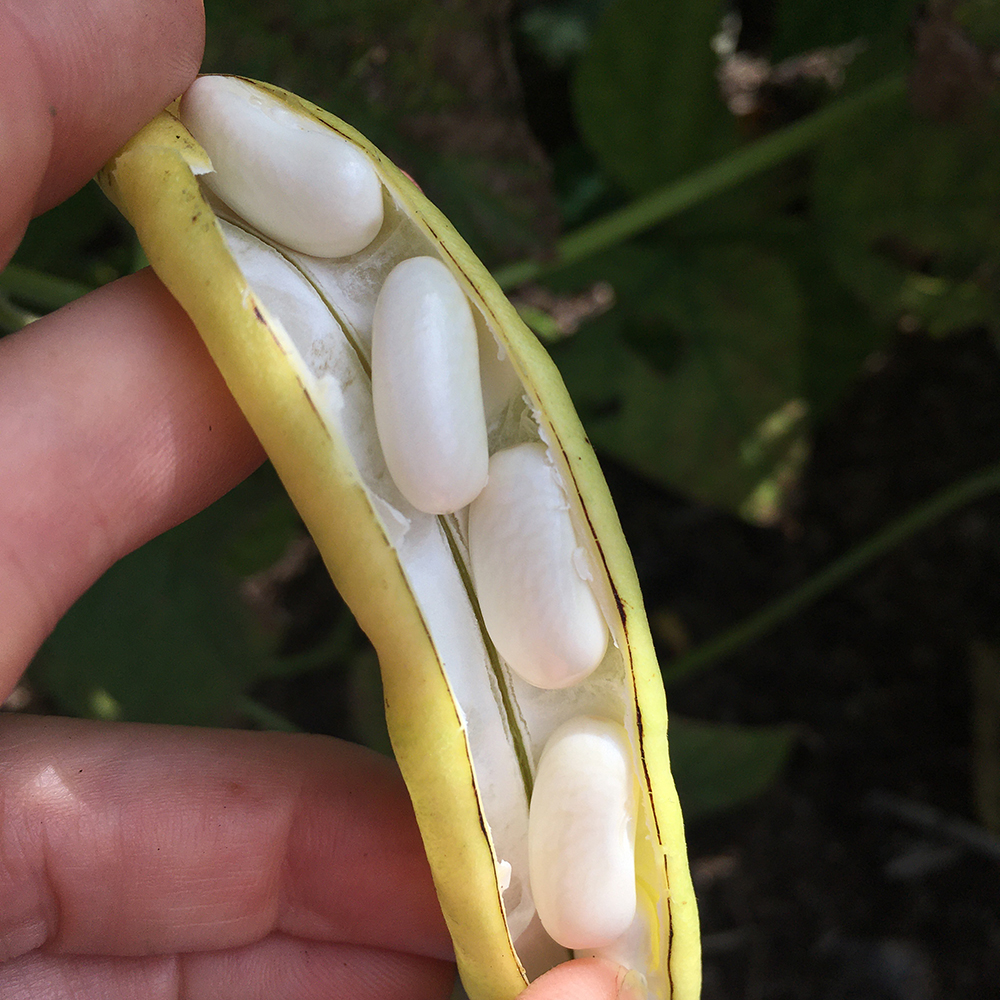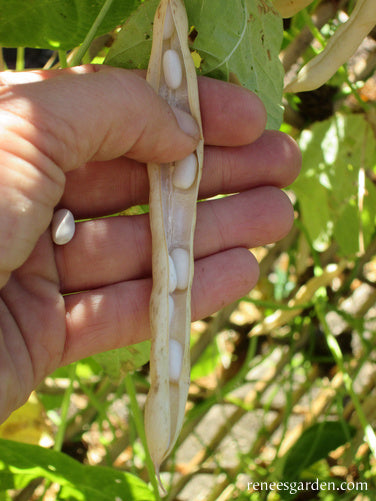To grow cannellini beans, choose a sunny spot with well-drained soil and sow the seeds directly. Water regularly and provide support for climbing varieties.

Credit: www.rocketgardens.co.uk
Understanding Cannellini Beans As A Versatile Crop
Cannellini beans, also known as white kidney beans, are highly versatile and nutritious. These creamy white beans are packed with essential nutrients, making them a valuable addition to any diet. They are a great source of protein, fiber, and several important vitamins and minerals. The health benefits of cannellini beans include improved digestion, weight management, and heart health support.
In addition to their nutritional value, cannellini beans are widely used in various culinary dishes. They have a mild flavor and a creamy texture that complements a range of recipes. From hearty soups and stews to delicious dips and spreads, these beans can be incorporated into numerous dishes. They are a popular ingredient in Mediterranean and Italian cuisines, adding richness and depth to traditional recipes.
| Health Benefits | Culinary Uses and Popularity |
|---|---|
|
|
How to Grow Cannellini Beans: Step by Step Guide
Choosing The Right Variety For Cannellini Beans
The success of growing cannellini beans largely depends on selecting the right variety for your specific climate and region. Different varieties of cannellini beans thrive in different conditions, so it is important to consider these factors when choosing your seeds. One of the key factors to consider is the climate of your area. Some varieties, such as ‘Apollo’ and ‘Betty’, are more suited for cooler climates, while others like ‘Etna’ and ‘Gigante’ prefer warmer temperatures.
Another factor to keep in mind is the soil type and fertility of your region. Certain varieties, like ‘Soliel’ and ‘Colombian’, are adapted to different soil conditions and can yield better results in specific areas. Additionally, consider the maturity period of the beans, as some varieties take longer to reach maturity than others. By carefully considering these factors and selecting the right variety of cannellini beans, you can ensure a successful and bountiful harvest.
Preparing The Soil For Optimal Cannellini Bean Growth
For optimal growth of cannellini beans, it is crucial to prepare the soil properly. The first step is to ensure that the soil meets the necessary requirements. Cannellini beans thrive in well-draining soil with a pH level ranging from 6.0 to 7.5. A pH level outside this range can affect nutrient availability, hindering the growth of the beans. To improve soil drainage, you can add organic matter such as compost or well-rotted manure.
This helps to enhance soil structure and water-holding capacity. Additionally, it is necessary to remove any rocks, weeds, or debris that might impede root growth. Tilling the soil can also help break up compacted soil and provides aeration. Taking these soil preparation techniques into consideration will ensure successful cultivation of cannellini beans.
Planting Cannellini Beans
Planting cannellini beans requires careful consideration of the best time to plant and the recommended growing seasons. To ensure optimal germination, it is important to follow the proper seed spacing and depth.
Cannellini beans thrive when planted after the danger of frost has passed and the soil temperature is consistently above 60°F (15°C). This usually occurs in late spring or early summer. It is essential to wait until the soil has warmed up to prevent the seeds from rotting.
When planting cannellini beans, it is recommended to space the seeds approximately 2 inches apart in rows that are 18-24 inches apart. The seeds should be planted at a depth of about 1-2 inches. Proper spacing allows the plants to receive adequate sunlight and air circulation, promoting healthy growth.
It is essential to keep the soil consistently moist but not waterlogged during the germination and growing process. Regular irrigation and mulching can help retain moisture and prevent weed competition.
Providing Adequate Water For Cannellini Beans
Providing adequate water is essential for the successful growth of cannellini beans. Watering requirements vary at different growth stages, so it is important to understand the needs of the plants.
During the germination stage, the soil should be kept consistently moist but not waterlogged. The seeds need water to start the sprouting process, but excess moisture can lead to rotting.
Once the seedlings have emerged, careful watering is necessary to promote strong root development. Watering deeply and infrequently encourages the roots to grow deeper into the soil, accessing nutrients and moisture. A slow and steady watering technique is preferable to prevent water runoff.
As the plants mature, their water requirements increase. Especially during hot and dry periods, regular watering is crucial to prevent stress. Deep watering is particularly important to ensure the roots receive an adequate water supply.
To manage moisture efficiently, irrigation methods such as drip irrigation or a soaker hose can be utilized. These methods deliver water directly to the roots, minimizing evaporation and ensuring that the plants receive the water they need.
Nurturing Healthy Cannellini Bean Plants
Proper fertilizer application and meeting the nutrient requirements of cannellini bean plants is crucial for their healthy growth. Prior to planting, prepare the soil by adding a well-balanced organic fertilizer. This will provide the necessary nutrients for the young plants.
As the plants grow, it is important to regularly monitor their nutrient needs. Conduct soil tests to determine any deficiencies and adjust the fertilizer accordingly. Adding compost can also enhance soil fertility and promote healthy plant development.
Pests and diseases can hinder the growth of cannellini beans. To prevent common issues, adopt preventive techniques like crop rotation and intercropping. Additionally, encourage beneficial insects like ladybugs and lacewings, which can help control pests naturally.
By implementing these practices and being attentive to the needs of your cannellini bean plants, you can ensure their healthy growth and enjoy a bountiful harvest.
Training And Supporting Cannellini Bean Plants
When it comes to training and supporting cannellini bean plants, choosing the right support structures is crucial. The beans need a sturdy structure that can support their growth and keep them off the ground to prevent disease and rot. There are several options for support structures, including trellises, cages, and poles. Trellises provide a vertical growing space for the beans and can be made from wood or metal.
Cages are another option and are typically made from wire or plastic. They offer support and stability for the plants. Poles are commonly used in commercial farming and allow the beans to grow upright. Whichever support structure you choose, make sure it is strong enough to support the weight of the plants and provides adequate space for them to grow.
Harvesting Cannellini Beans
Harvesting cannellini beans requires attention to signs of maturity and readiness for harvest.
One of the signs that beans are ready to be harvested is when the pods turn yellow and dry out. When you shake the pods, you should be able to hear the beans rattling inside. Another indicator is when the plant starts to wither and die back.
| Harvesting Techniques | Benefits |
|---|---|
| Hand-picking | – Allows for selective harvesting of mature beans – Minimizes damage to plants |
| Harvesting in stages | – Extends the harvest period for a longer supply of fresh beans – Maximizes yield |
| Proper storage | – Ensures long-lasting quality – Reduces the risk of mold or pest infestation |
By following these harvesting techniques, you can ensure a bountiful yield of cannellini beans. Remember to store them properly in a cool and dry place to maintain their quality for an extended period.
Drying And Storing Cannellini Beans
Preparing harvested cannellini beans for drying is an important step in ensuring their quality and freshness. First, remove any dirt or debris by gently rinsing the beans. Next, spread them out in a single layer on a clean and dry surface to allow them to air dry completely. This process typically takes about one to two weeks. Once the beans are completely dry, you can store them in airtight containers such as glass jars or plastic bags to maintain their freshness and prevent moisture absorption.
It is recommended to label the containers with the date of drying for easy tracking. Additionally, keep the containers in a cool, dry, and dark place to reduce exposure to light and humidity. By following these simple steps, you can ensure that your dried cannellini beans retain their flavor and nutritional value for an extended period.
Frequently Asked Questions For How To Grow Cannellini Beans
Are Cannellini Beans Easy To Grow?
Yes, cannellini beans are easy to grow. With proper care and maintenance, they can be grown in your garden without much hassle.
Do Cannellini Beans Climb?
No, cannellini beans do not climb. Cannellini beans are bushy plants that grow close to the ground, and they do not have the ability to climb like some other plants.
Are Cannellini Beans The Same As Northern Beans?
No, cannellini beans and northern beans are not the same. They are different varieties of white beans.
Are Cannellini Beans A Bush Bean?
No, cannellini beans are not a bush bean. They are a type of white kidney bean.
Conclusion
To sum up, growing cannellini beans can be a rewarding and fulfilling experience for any gardener. By following the steps outlined in this post, you can ensure your beans thrive and provide a bountiful harvest. Remember to provide them with ample sunlight, well-drained soil, and proper watering.
With a little patience and care, you’ll soon be enjoying delicious and nutritious cannellini beans straight from your own backyard. Happy growing!

